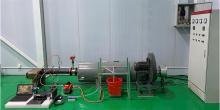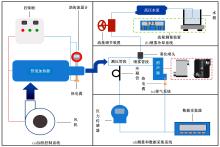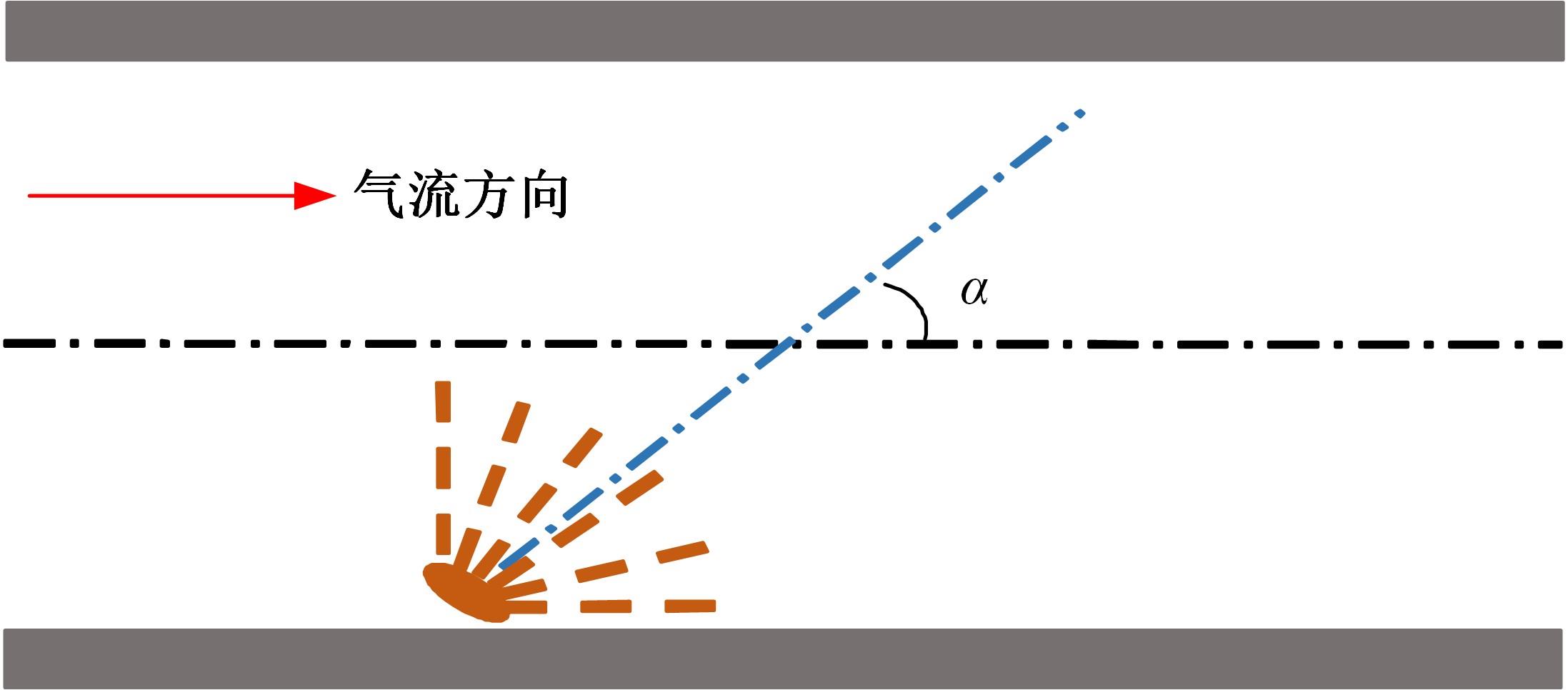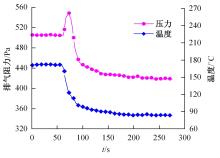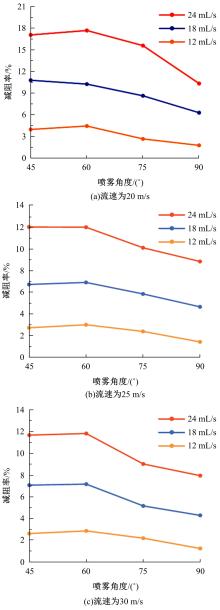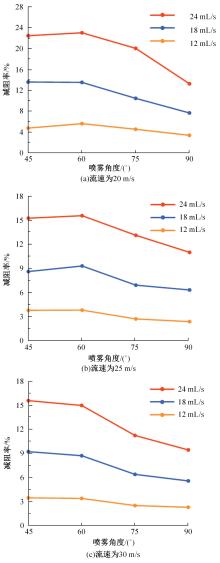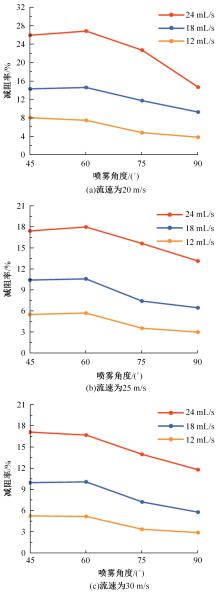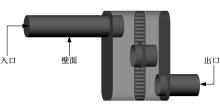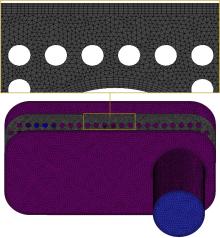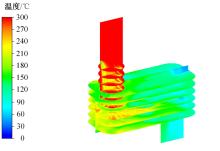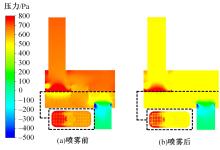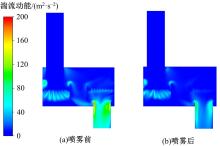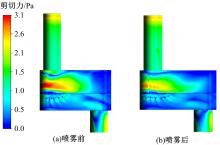Journal of Jilin University(Engineering and Technology Edition) ›› 2024, Vol. 54 ›› Issue (3): 641-649.doi: 10.13229/j.cnki.jdxbgxb.20220563
Drag reduction of engine exhaust system based on spray cooling
Cheng-chun ZHANG1,2( ),Zhen-tao XIN1,2,Hai YU3(
),Zhen-tao XIN1,2,Hai YU3( ),Yu-feng WU4,Xiao-wei SUN1,2,Tian-yu DU1,2
),Yu-feng WU4,Xiao-wei SUN1,2,Tian-yu DU1,2
- 1.Key Laboratory of Bionic Engineering,Ministry of Education,Jilin University,Changchun 130022,China
2.Weihai Institute for Bionics,Jilin University,Weihai 264402,China
3.WeiHai Science and Technology Innovation and Development Center,Weihai 264200,China
4.China North Vehicle Research Institute,Bejing 100086,China
CLC Number:
- V228.7
| 1 | Ma Ze-tai, Gu Yun-cheng, Zhu Si-peng, et al. Analysis on capability of power recovery of marine diesel engine at high backpressure conditions[J]. Applied Thermal Engineering, 2022, 204: No. 117933. |
| 2 | Ebrahimnataj M R, Tiji A E, Eisapour M, et al. The effect of soot accumulation and backpressure of an integrated after-treatment system on diesel engine performance[J]. Journal of Thermal Analysis and Calorimetry, 2021, 147: 8435-8443. |
| 3 | Sapra H, Godjevac M, Visser K, et al. Experimental and simulation-based investigations of marine diesel engine performance against static back pressure[J]. Applied Energy, 2017, 204: 78-92. |
| 4 | Dziubak T, Boruta G. Experimental and theoretical research on pressure drop changes in a two-stage air filter used in tracked vehicle engine[J]. Separations, 2021, 8(6): No.71. |
| 5 | Sivaram A R, Rajavel R, Jayakumar N, et al. Exhaust back pressure effect on the performance features of a diesel engine[J]. ARPN Journal of Engineering and Applied Sciences, 2017, 12: 5353-5356. |
| 6 | Xin Zhe, Wang Shunxi, Zhang Yin, et al. Pressure loss of urea-SCR converter and its influence on diesel engine performance[J]. Transactions of the Chinese Society of Agricultural Engineering, 2011, 27(8): 169-173. |
| 7 | Shabnam R A. Geometry mediated drag reduction using riblets and wrinkled surface textures[D]. Cambridge: Massachusetts Institute of Technology, 2018. |
| 8 | Rong Wan-ting, Zhang Hai-feng, Mao Zhi-gang, et al. Stable drag reduction of anisotropic superhydrophobic/hydrophilic surfaces containing bioinspired micro/nanostructured arrays by laser ablation[J]. Colloids and Surfaces A: Physicochemical and Engineering Aspects, 2021, 622: No. 126712. |
| 9 | 许浩然. 形状、结构耦元对排气管减阻性能影响 [D]. 长春:吉林大学材料科学与工程学院,2015. |
| Xu Hao-ran. Influence of shape and structure coupling elements on drag reduction performance of exhaust pipe[D]. Changchun: School of Materials Science and Engineering, Jilin University, 2015. | |
| 10 | Xu Jian-min, Zhou Shui-ting, Li Kun-sheng. Analysis of flow field and pressure loss for fork truck muffler based on the finite volume method[J]. International Journal of Heat and Technology, 2015, 33(3): 85-90. |
| 11 | Pangavhane S D, Ubale A, Tandon V, et al. Experimental and CFD analysis of a perforated inner pipe muffler for the prediction of backpressure[J]. International Journal of Engineering & Technology, 2013, 5(5): 115-119. |
| 12 | Lee S J, Jang Y G. Control of flow around a NACA 0012 airfoil with a micro-riblet film[J]. Journal of Fluids and Structures, 2005, 20(5): 659-672. |
| 13 | Viswanath P R. Aircraft viscous drag reduction using riblets[J]. Progress in Aerospace Sciences, 2002, 38(6/7): 571-600. |
| 14 | 田丽梅, 王养俊, 李子源, 等. 仿生功能表面内流减阻测试系统的研制[J]. 吉林大学学报: 工学版, 2017, 47(4): 1179-1184. |
| Tian Li-mei, Wang Yang-jun, Li Zi-yuan, et al. Development of drag-reduction test system of bionic functional surfaces with internal flow[J]. Journal of Jilin University (Engineering and Technology Edition), 2017, 47(4): 1179-1184. | |
| 15 | Liu Gui-jie, Yuan Zi-chao, Qiu Zhao-zun, et al. A brief review of bio-inspired surface technology and application toward underwater drag reduction[J]. Ocean Engineering, 2020, 199: No. 106962. |
| 16 | Tian Gui-zhong, Zhang Yao-sheng, Feng Xiao-ming, et al. Focus on bioinspired textured surfaces toward fluid drag reduction: recent progresses and challenges[J]. Advanced Engineering Materials, 2022, 24(1): No. 2100696. |
| 17 | Prajapati V D, Desai A J. Design and analysis of automotive muffler[J]. International Journal of Engineering Research & Technology (IJERT), 2016, 5(5): 384-389. |
| 18 | Sayinci B. Effect of strainer type, spray pressure, and orifice size on the discharge coefficient of standard flat-fan nozzles[J]. Turkish Journal of Agriculture and Forestry, 2015, 39(5): 692-704. |
| 19 | Payri R, Bracho G, Gimeno J, et al. Investigation of the urea-water solution atomization process in engine exhaust-like conditions[J]. Experimental Thermal and Fluid Science, 2019, 108: 75-84. |
| 20 | Zhang Hai-bin, Bai Bo-feng, Liu Li, et al. Droplet dispersion characteristics of the hollow cone sprays in crossflow[J]. Experimental Thermal and Fluid Science, 2013, 45: 25-33. |
| 21 | Sun Y B, Guan Z Q, Hal G, et al. Investigation on the influence of injection direction on the spray cooling performance in natural draft dry cooling tower[J]. International Journal of Heat and Mass Transfer, 2017, 110: 113-131. |
| 22 | Gao Ran, Liu Kai-kai, Li An-gui, et al. Biomimetic duct tee for reducing the local resistance of a ventilation and air-conditioning system[J]. Building and Environment, 2018, 129: 130-141. |
| 23 | Eggels J G M, Unger F, Weiss M H, et al. Fully developed turbulent pipe flow: a comparison between direct numerical simulation and experiment[J]. Journal of Fluid Mechanics, 1994, 268: 175-210. |
| 24 | Paul D. Advanced Approaches in Turbulence[M]. Netherlands: Elsevier, 2021: 161-241. |
| [1] | Ying-chao ZHANG,Yun-hang LI,Zi-yu GUO,Guo-hua WANG,Zhe ZHANG,Chang SU. Optimization of the aerodynamic drag reduction of a cab behind engine vehicle [J]. Journal of Jilin University(Engineering and Technology Edition), 2022, 52(4): 745-753. |
| [2] | Wei-ping SHI,Xu ZHAO,Xing-jun HU,Tian-ming YU,Bo-wen LIU,Yan DUAN. Design and numerical simulation of water restriction device AICD for natural gas exploitation [J]. Journal of Jilin University(Engineering and Technology Edition), 2019, 49(6): 1986-1991. |
| [3] | ZHAO Gang, LI Zhao-yuan, ZHAO Hua-xing, RAO Yu, LI Fang, LIU Wen-bo. Development and experiment of external-rotation vertical jet drag reduction testing platform [J]. 吉林大学学报(工学版), 2016, 46(4): 1175-1181. |
| [4] | WEI Gan, YANG Zhi-gang, LI Qi-liang. Aerodynamic optimization method for car body based on process costing genetic algorithm [J]. 吉林大学学报(工学版), 2014, 44(6): 1578-1582. |
| [5] | LI Fang, ZHAO Gang, LIU Wei-xin, SUN Zhuang-zhi. Numerical simulation of drag reduction characteristics of a bionic jet surface with multiple holes [J]. 吉林大学学报(工学版), 2014, 44(6): 1698-1703. |
| [6] | LIU Guang-jie,XU Tao,LI Jun-lou,YU Zheng-lei,XIU Hang,CHENG Fei. Design and optimization of double chamber model of gas turbine transition piece [J]. 吉林大学学报(工学版), 2014, 44(5): 1360-1365. |
| [7] | TIAN Li-mei, SHANG Zhen, HU Guo-liang, LI Nan. Numerical simulation of the lift and drag characteristics of passenger car based on morphological bionics [J]. 吉林大学学报(工学版), 2014, 44(5): 1283-1289. |
| [8] | WANG Ji-yue, CONG Qian, QI Xin,ZHANG Yan. Optimum structural design and analysis of drag reduction mechanism of bionic needles inspired by cicada stylet [J]. 吉林大学学报(工学版), 2014, 44(3): 696-700. |
| [9] | GU Yun-qing, ZHAO Gang, LIU Hao, WANG Yan-ming, LI Zhao-yuan, LIU Wen-bo, ZHAO Jian-ying, LI Fang. Characteristics of drag reduction of bionic dimpled surface of shell rubber ring of aerodynamic extinguishing cannon [J]. 吉林大学学报(工学版), 2013, 43(04): 983-990. |
| [10] | TIAN Li-mei, GAO Zhi-hua, WANG Yin-ci, REN Lu-quan, SHANG Zhen. Design and experiment of bionic coupling functional surface caused by dual factors of form and flexible material [J]. 吉林大学学报(工学版), 2013, 43(04): 970-975. |
| [11] | LIU Shu-cheng, PAN Xin, WEI Wei, YAN Qing-dong, LAI Yu-yang. Complexity-based robustness analysis of turbulence model in torque converter flow field simulation [J]. 吉林大学学报(工学版), 2013, 43(03): 613-618. |
| [12] | HU Xing-jun, YANG Bo, GUO Peng, WANG Jing-yu, YANG Yang, AN Yang. Aerodynamic drag reduction of van based on underbody skirt [J]. 吉林大学学报(工学版), 2011, 41(增刊2): 108-113. |
| [13] | SUN Bin,LIU Tian-dong,ZHOU Yun-long. Application of principal component analysis of wavelet packet on flow regime identification of gas-liquid two-phase flow [J]. 吉林大学学报(工学版), 2009, 39(06): 1532-1537. |
| [14] |
Wang Jing-chun,Chen Li-li,Ren Lu-quan,Gu Song-tao,Cong Qian .
Experimental research on drag reduction of bionic injector needles [J]. 吉林大学学报(工学版), 2008, 38(02): 379-0382. |
| [15] |
Experiment and numerical simulation on drag reduction for bodies ofrevolution using bionic scrobiculate ringed surface .
Experiment and numerical simulation on drag reduction for bodies of revolution using bionic scrobiculate ringed surface [J]. 吉林大学学报(工学版), 2007, 37(01): 100-105. |
|
||
